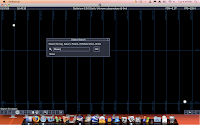
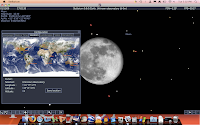
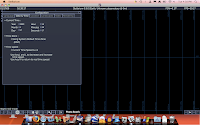
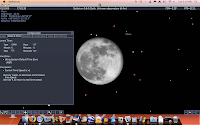
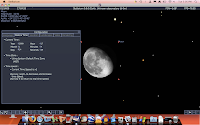
Dear fellow teachers and administrators, welcome to Tech Savy Teacher! Recently in my classroom, I planned an activity for my 6th grade class that was convenient and easy for both the students and me. My class explored the phases of the moon using a program called Stellarium. The learning objective for this activity can be found on the Utah Core Curriculum website under the category of Science. It is found in standard 1, objective 2.
For those of you who are unfamiliar with Stellarium, I will explain what this program is and how to utilize it in your own classroom. Stellarium is a scientific program used to explore the various parts of the solar system. For this particular assignment, the students observed the phases of the moon. However, depending on your solar system course objective, you could use this program to explore the planets, constellations, and their corresponding zodiac signs. The sky is the limit!
The pictures I have provided will be of help to you as you practice and prepare to use Stellarium in your own classroom. Searching for and locating the different phases of the moon was so intriguing and effortless on Stellarium! Here is a list of the steps I followed to complete this project:
Step #1: Click on the Stellarium program and click on the “Search for Object” box. A display box will pop up as shown. I entered in the moon, which can be seen in the picture above. Please refer to the pictures throughout this article, as they are a great reference for you to use if you or your students get confused or uncertain about how to get to the next step in this program. They provide you with a visual representation of what each step looks like.
Step #2: Push the function key and page up at the same time in order to zoom in on the picture of the moon provided.
Step 3: Click on the “Configuration” display box and go to “date and time” tab. In the day slot, you have the ability to type in each day of the month (remember, it takes 28 days for the moon to complete its phases). There is an “up” arrow that you can use if you wish to go to a later date- you can scroll in order to do that. Or you can use a “down” arrow to go to an earlier date. The choice is yours! Experiment with it and get a feel for it.
Step 4: I included pictures of various phases of the moon. The Full moon, Waning Gibbous, and Third Quarter are shown above. If the student would like, they have the ability to change the place from which they are viewing the moon (i.e. different states, countries, or views of the moon). This can be done by going to the “location” tab in the “Configuration” display box and changing it to whatever your little heart desires!
Stellarium is truly a program that is extremely beneficial to teachers and students alike. One advantage of this program is that is time-efficient. Rather than assigning your students to go out every night, draw the moon, and record their observations, this program enables them to perform this same task in a fraction of the time. The students are able to scroll through each day of the month and thus, have the ability to see all of the phases of the moon in a matter of minutes. Not only is this program time-efficient, but it is also helps students to be more excited and engaged in the content they learn. Observing the moon every single night could prove to be boring for the students. Thus, this program keeps their attention, helps them to focus, and as a result of not having to observe for a long span of time, makes it more interesting for them. Another benefit to this program is that it is not affected by weather or gang violence. Students may be unable to go outside to observe the moon due to inclement weather or they may live in a dangerous neighborhood, which prevents them from being able to go outside of their home at night due to gang violence. An additional benefit that this program provides is that of helping students to view the phases of the moon in different states and countries. From this program, students can record their own observations and come to the conclusion that every state in the United States and every country goes through the same sequence of the moon phases. A final advantage of this program is that it makes the process of exploring the moon more personal to the student. The student is able to view the phases of the moon in a short time right in front of his or her own eyes on the computer screen. They are in control of their research, observation, and the conclusions they arrive at. As a result of this independence on the computer, Stellarium provides students with a meaningful use of technology, which further enhances their knowledge in Science. The children will love it and so will you!
